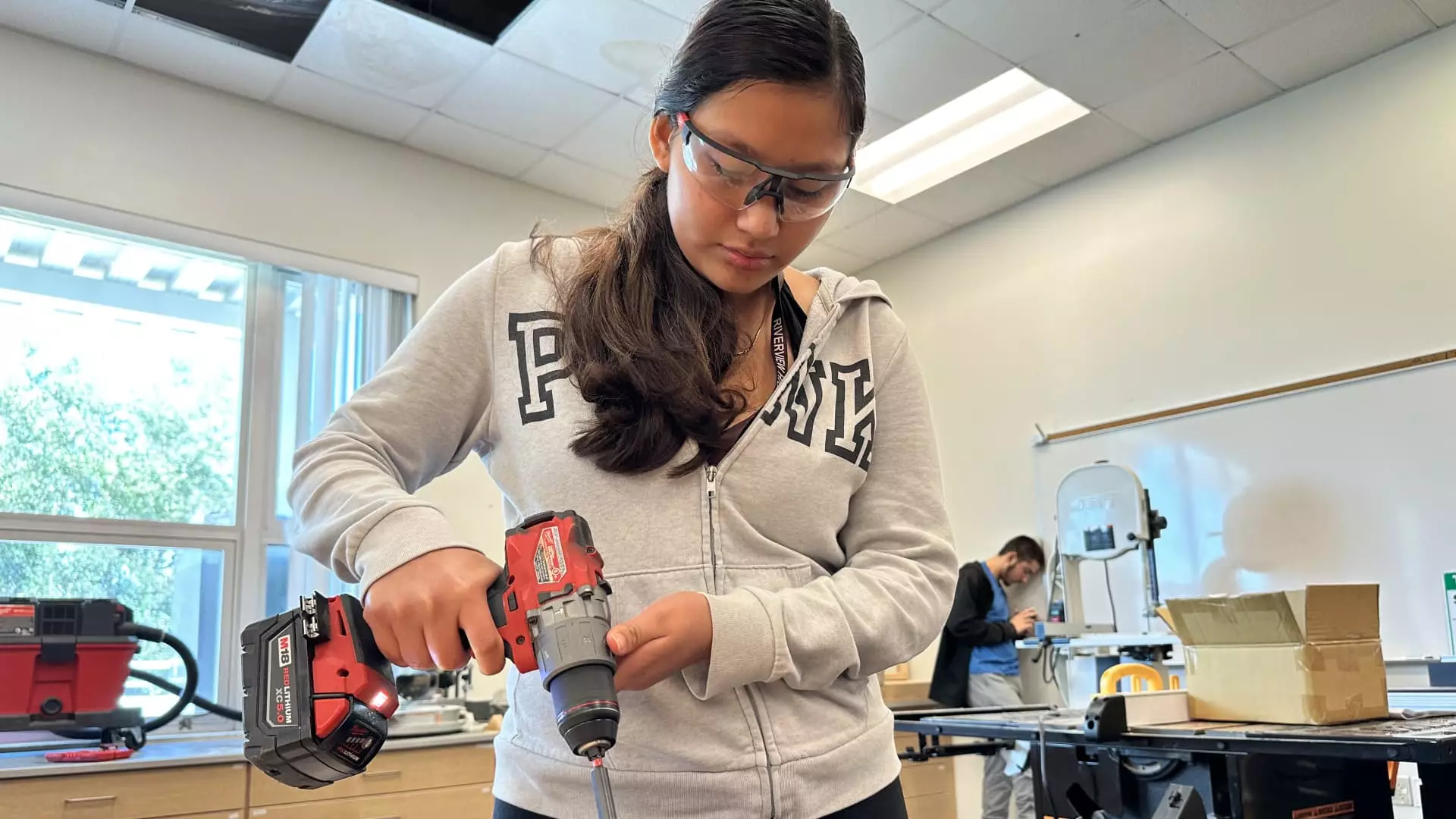In a world where the narrative surrounding education has been heavily skewed towards the necessity of a college degree, more young individuals are beginning to recognize the value of vocational training. Angela Ramirez-Riojas, an 18-year-old high school senior from Riverview, Florida, epitomizes this growing trend. She initially viewed college as her secondary option, inspired by her grandfather’s role in the construction industry. This shift in perspective highlights a larger cultural transition among Generation Z, who are reevaluating traditional career paths in favor of practical and lucrative trades.
Riverview High School’s construction academy, launched three years ago, serves as a prime example of how educational institutions are adapting to meet the needs of the labor market. As Ramirez-Riojas expressed, “I want something quick to help me move along,” illustrating the desire for immediate, hands-on experience that vocational programs can provide. This program is not just an alternative route; it has become a pathway to well-paying jobs that allow students to remain in their community, fostering both personal and economic growth.
The Growing Demand for Skilled Workers
The construction industry’s pressing need for skilled labor is no secret, as highlighted by Erin Haughey, principal of Riverview High School. With a waiting list for the construction academy, the appeal of vocational education has never been stronger. The principal emphasizes that this program is not merely for the students who struggle academically, but rather for those who exhibit motivation and a desire to learn a trade.
This realignment towards vocational training addresses a significant issue facing the construction sector today—a labor shortage exacerbated by an aging workforce. According to the Associated Builders and Contractors, more than half a million workers will need to be recruited this year alone to keep pace with industry demand. As many seasoned professionals retire, new and younger entrants into the workforce are crucial.
The existence of a thriving construction academy demonstrates that schools are taking proactive steps to fill this void. Notably, the academy received funding from Neal Communities, a local private builder, which recognizes the critical need to cultivate new tradespeople to support ongoing construction projects. Such collaborations between educational institutions and industry stakeholders underscore the mutual benefit of investing in vocational programs.
The perception of vocational careers as less prestigious than four-year degrees is rapidly changing. Recent statistics reveal a stark contrast in earning potential between vocational positions and typical white-collar jobs. New hires in construction earn an impressive median salary of $48,089, significantly higher than their counterparts in professional services, who average $39,520. This shift—driven by supply and demand dynamics—illustrates that skilled trades can provide lucrative opportunities, often with less time required for training compared to a four-year degree.
Financial advisors such as Ted Jenkin emphasize that misconceptions about the value of trade jobs persist, saying, “There’s an insulting presumption that a four-year college is the gold standard—it’s not.” A growing number of high school students, nearly half, believe that vocational training or an associate degree will suffice for their career goals. This sentiment reflects a broader cultural change, as young people are increasingly valuing hands-on experience over formal education paths.
As enrollment in vocational programs surged by 16% from 2022 to 2023, it’s clear that more students are opting for practical skill-building as a desirable career route. This trend speaks to a changing narrative surrounding education, suggesting that “real-world” experience holds significant weight in defining success. According to a recent survey, 56% of teens feel that practical work experience is more beneficial than a traditional college degree.
This movement towards the “toolbelt generation” signals a promising evolution in how society views skilled trades. More students like Ramirez-Riojas are embracing vocational education, which offers both immediate job prospects and long-term career satisfaction. The evolution of education must continue to emphasize the importance of skilled labor, ensuring that diverse pathways to success are available and valued equally to academic routes.
As vocational training becomes more mainstream, allowing individuals to secure stable and rewarding careers, it is crucial for educational institutions to continue fostering these opportunities. The construction academy at Riverview High School is not merely an isolated success story; it represents a growing recognition of the essential role that skilled trades play in sustaining and advancing the economy, ultimately leading to a more balanced and diversified workforce.

Leave a Reply